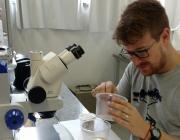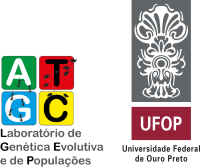Citation:
Abstract:
Among insect taxa, ants exhibit one of the most variable chromosome numbers ranging from n = 1 to n = 60. This high karyotype diversity is suggested to be correlated to ants diversification. The karyotype evolution of ants is usually understood in terms of Robertsonian rearrangements towards an increase in chromosome numbers. The ant genus Mycetophylax is a small monogynous basal Attini ant (Formicidae: Myrmicinae), endemic to sand dunes along the Brazilian coastlines. A recent taxonomic revision validates three species, Mycetophylax morschi, M. conformis and M. simplex. In this paper, we cytogenetically characterized all species that belongs to the genus and analyzed the karyotypic evolution of Mycetophylaxin the context of a molecular phylogeny and ancestral character state reconstruction. M. morschi showed a polymorphic number of chromosomes, with colonies showing 2n = 26 and 2n = 30 chromosomes. M. conformis presented a diploid chromosome number of 30 chromosomes, while M. simplex showed 36 chromosomes. The probabilistic models suggest that the ancestral haploid chromosome number of Mycetophylax was 17 (Likelihood framework) or 18 (Bayesian framework). The analysis also suggested that fusions were responsible for the evolutionary reduction in chromosome numbers of M. conformis and M. morschi karyotypes whereas fission may determines the M. simplex karyotype. These results obtained show the importance of fusions in chromosome changes towards a chromosome number reduction in Formicidae and how a phylogenetic background can be used to reconstruct hypotheses about chromosomes evolution.



